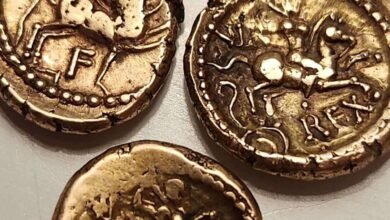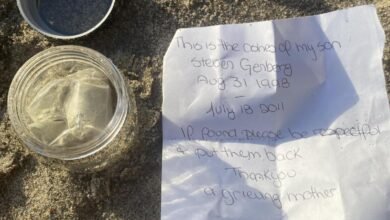Huge, 2,200-year-old tomb with magnificent interior unearthed in China. See its treasures
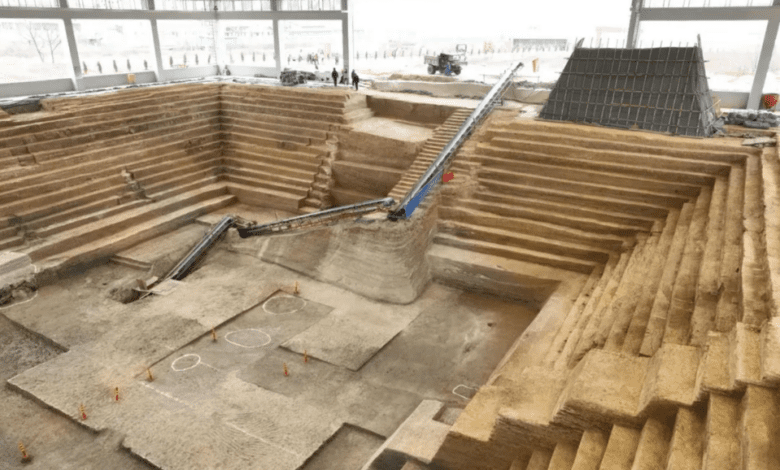
A large hill lies in an otherwise relatively normal-looking field in eastern China’s Anhui province. When the hill is covered with grass and trees, it looks completely natural.
But when archaeologists began excavating, they quickly discovered that it was no ordinary mound. It was a huge, 2,200-year-old tomb full of treasure.
Archaeologists have spent the past four years excavating the mound outside Huainan, the Institute of Archeology of the Chinese Academy of Social Sciences said in an April 17 news release.
The gigantic tomb complex – called Wuwangdun – covers just over 16 million square meters, about the size of 280 football fields or three times the size of Vatican City. Surrounded by a moat, the complex consists of three main sections: an external cemetery, a central tomb and a coffin chamber.
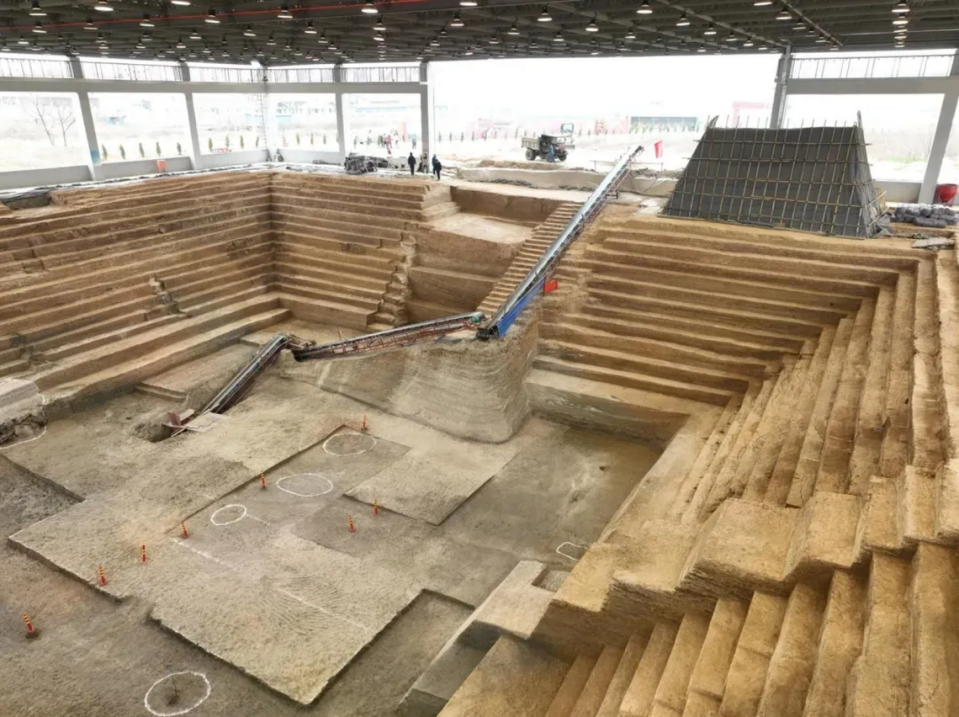 A look down into the central tomb of Wuwangdun.
A look down into the central tomb of Wuwangdun.What do we learn about the past? Here are three of our standout archeology stories from the last week.
→ Farmer loses plow part in Polish field – then finds historical artifact while searching
→Divers recover ancient Roman cargo from shipwrecks – and find unique carvings. Do you see them
→ Metal detectors find antique portrait in Danish field. Look at the “legend” presented therein
Built by the ancient Chu state, the Wuwangdun complex dates back to the Warring States Period, a turbulent era in Chinese history that began in 475 BC. began and 221 BC. The Huainan city government said in a press release on April 17.
The outer cemetery features a large rectangular pit filled with horses and chariots, sacrificial pits and other structures, archaeologists said.
An aerial view of the coffin chamber and its nine rooms in the Wuwangdun complex.
In the middle of these structures is the heart of the complex: the 2,200-year-old tomb, which is almost in the shape of an inverted pyramid. Its four walls reach down to the ground in 21 large steps. A slanted entrance extends outward from one side.
According to archaeologists, after the tomb was built, earth was piled on top to create a mound-like shape. Excavations unearthed shovels, tools, spears, arrowheads and bamboo baskets.
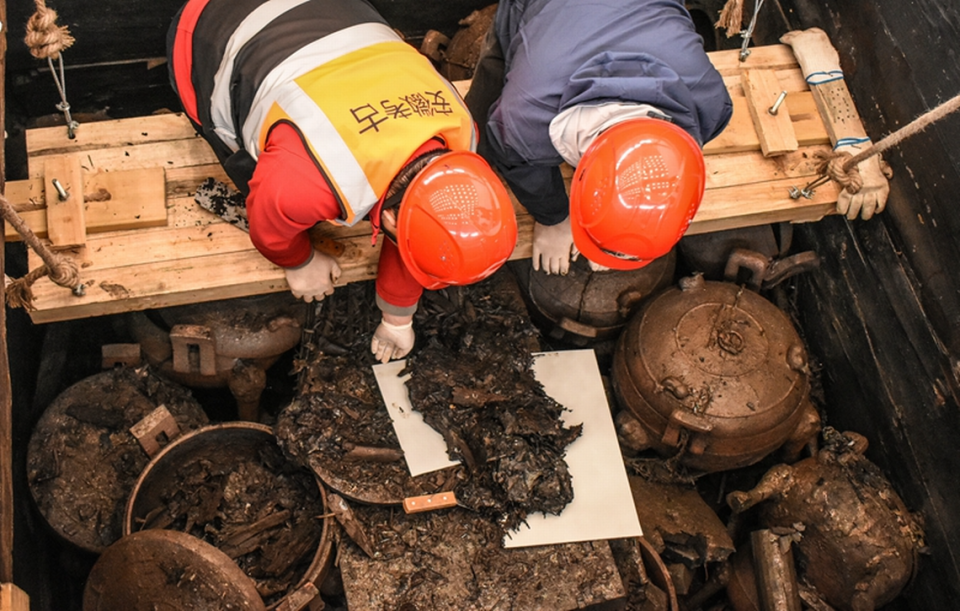
The coffin chamber is located at the bottom of the 2,200-year-old grave. This wooden structure has nine rooms and is shaped like a plus sign. A photo shows the coffin after excavations removed the bamboo mats that covered the top.
Archaeologists found almost a thousand words on the wooden coffin walls, the institute said. The text described the placement of the coffin pieces and the function of various rooms.
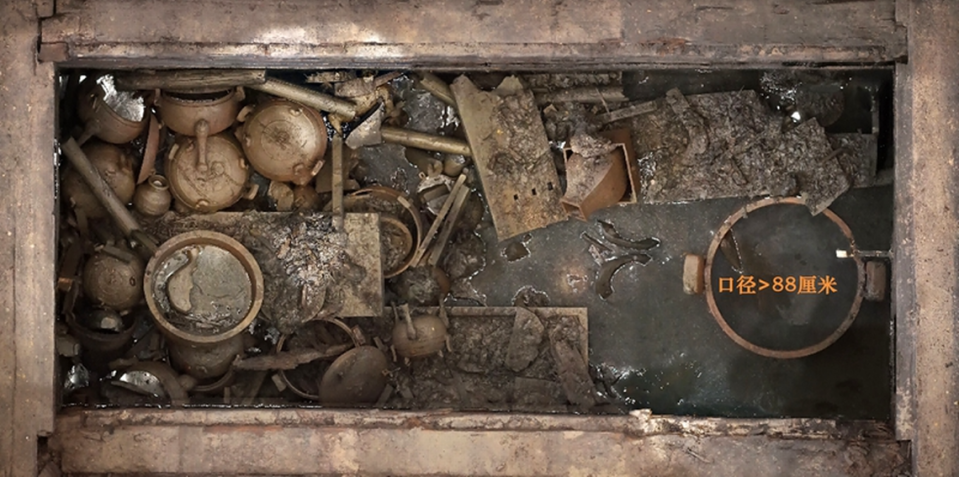
So far, over a thousand artifacts have been discovered in the Wuwangdun tomb complex, archaeologists said. These include, among other things, musical instruments, painted wooden objects, vessels and utensils made of bronze. Photos show some of these treasures.
The 2,200-year-old tomb complex is the “largest, tallest and most complex” tomb of its kind ever found, reported Shanghai Eye, a Chinese state-backed news agency.
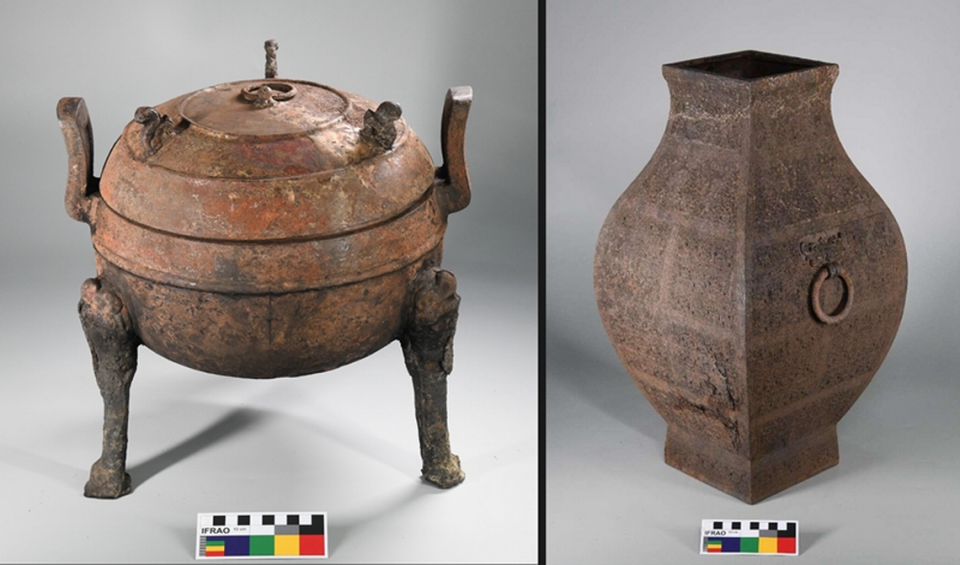
But a central mystery remains: who was buried here? The leading theory is that the tomb belongs to an ancient king of the Chu state, King Kaolie. However, further investigation is needed, the Shanghai Eye reported.
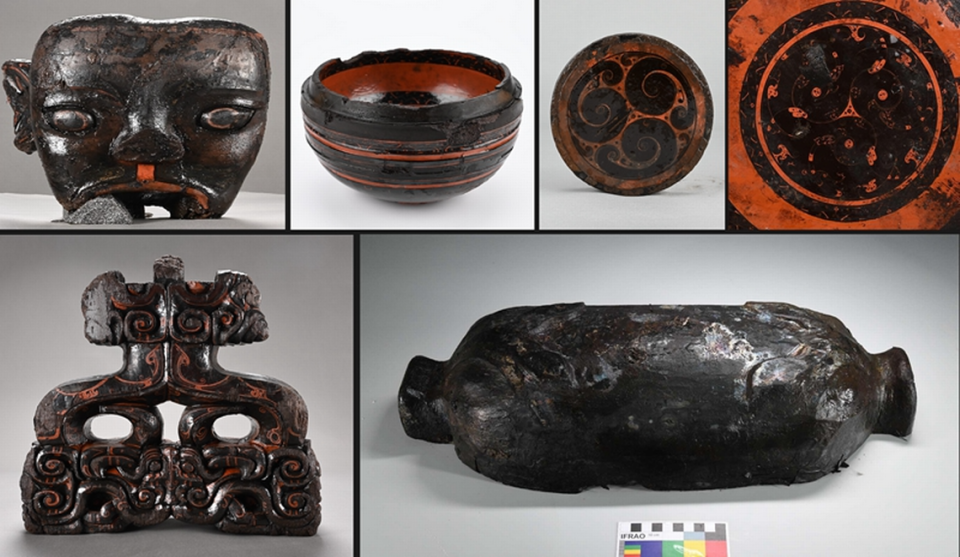
Excavations at the Wuwangdun Tomb in Huainan are still ongoing. Huainan is a city in Anhui Province in eastern China, about 600 miles south of Beijing.
Google Translate was used to translate the press release from the Institute of Archeology of the Chinese Academy of Social Sciences.
1,000-year-old weapon – the first of its kind – found sticking out of a grave in Spain
Worker discovers muddy lump – and solves 116-year-old mystery. Check out the ancient Roman find
The ancient city was destroyed by ISIS. Now his reflection can be found in “forgotten” ruins

